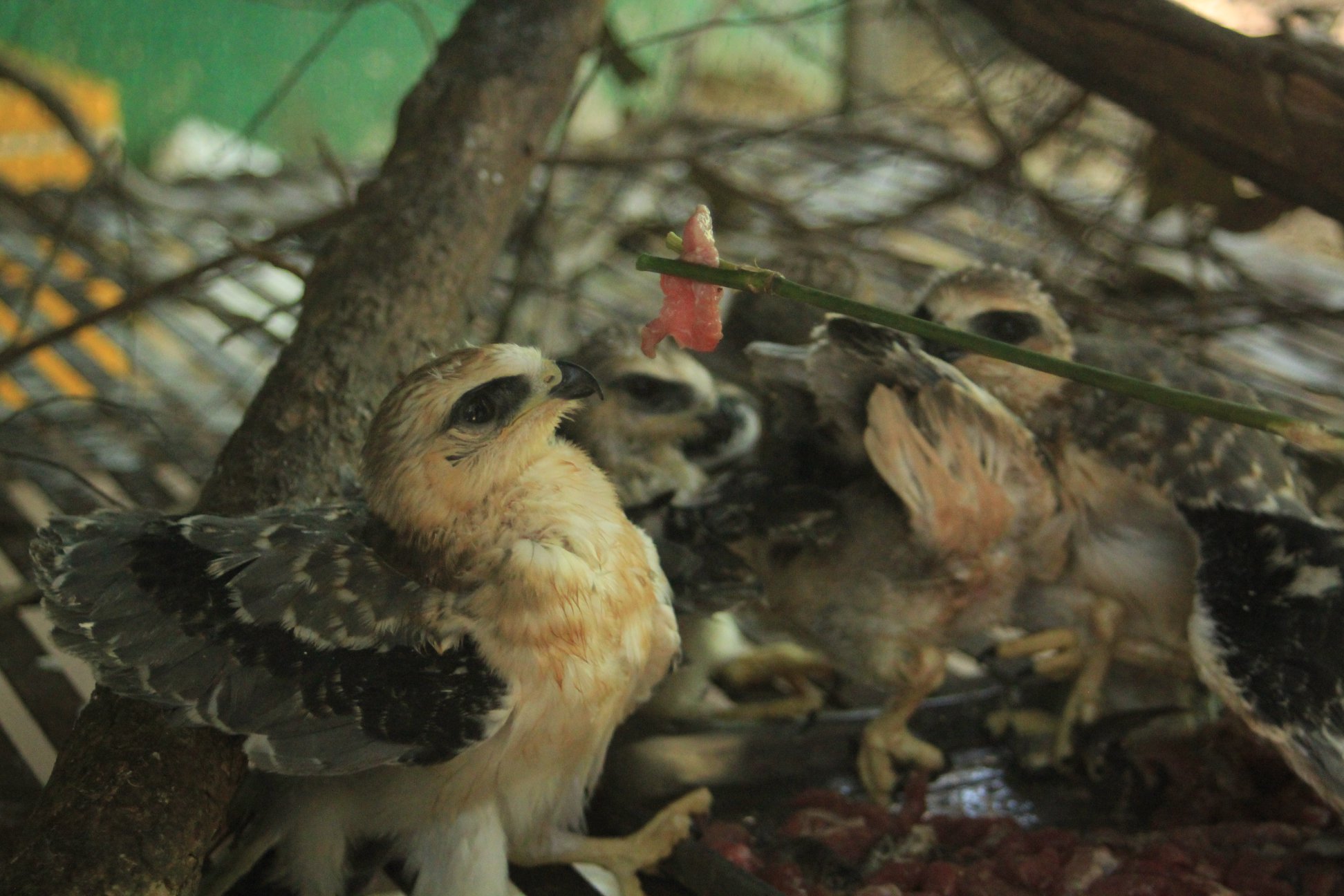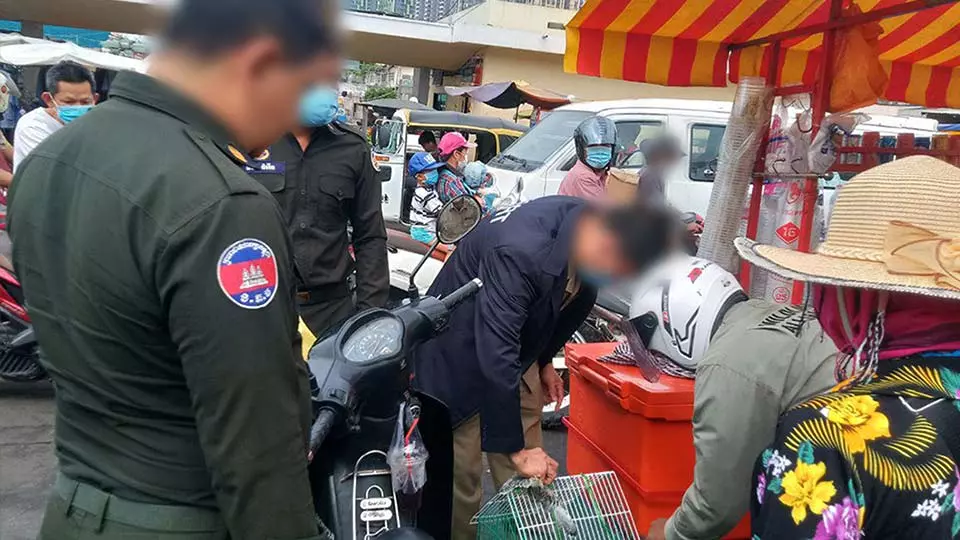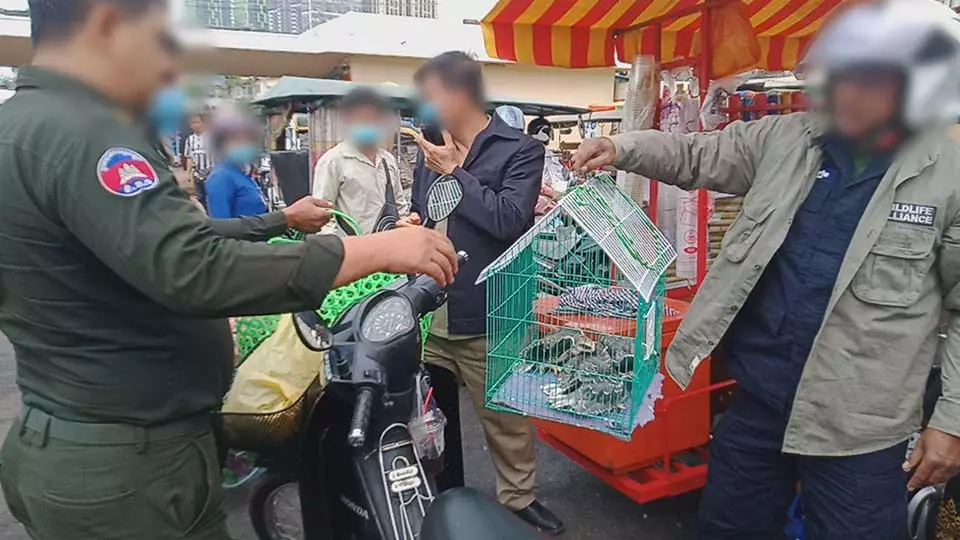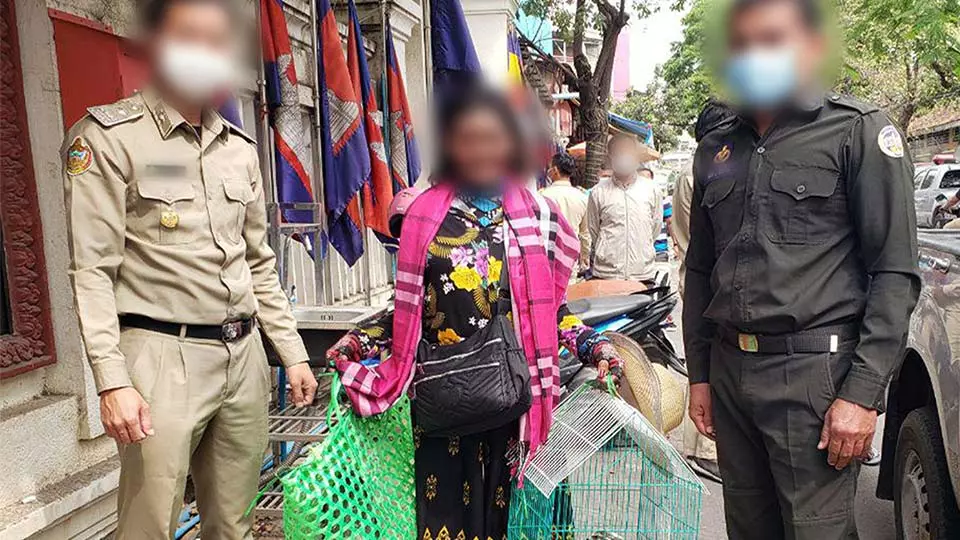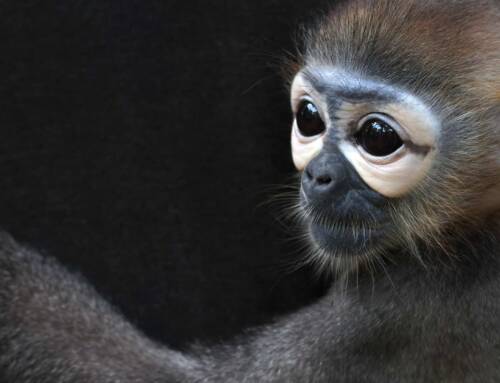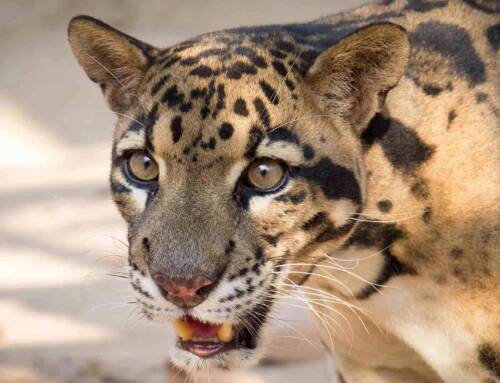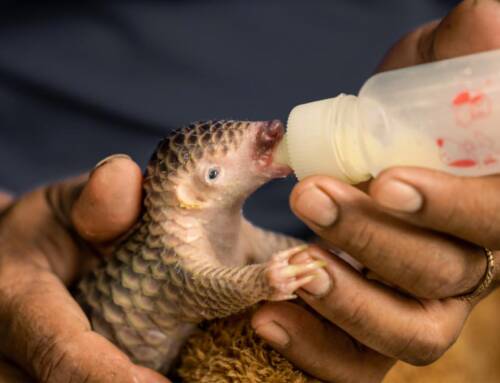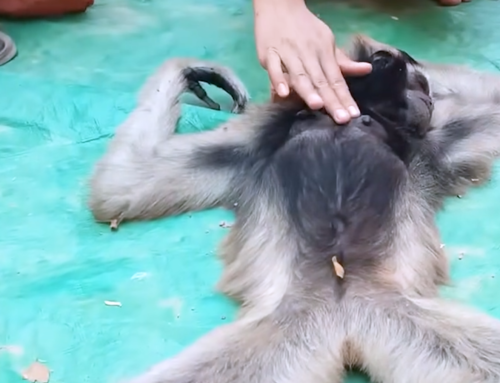There’s a new trend in the illegal pet trade in town : birds of prey. It’s all over Phnom Penh: at markets around the city, reports to our Wildlife Crime Hotline (012 500 094) and in numerous posts on social media where sellers court buyers – who may even capture birds “to order” from the wild.
In Cambodia, there are a handful of species targeted by the trade, primarily raptors like black shouldered kite (Elanus caeruleus) chicks and barn owls. This time of year is nesting season for many bird species, and evidence so far points to opportunistic traders selling black shouldered kite (Elanus caeruleus) chicks. This would mean that they are sold on the market in Phnom Penh as and when they become available.
The buzz for these birds has meant the Wildlife Rapid Rescue Team has made a series of . rescues, especially from markets in Phnom Penh. The birds were brought to the Phnom Tamao Wildlife Rescue Centre where they are rehabilitating in the nursery.
What is a black shouldered kite anyway?
The black shouldered kite is a small bird of prey, or raptor species that eats rodents, frogs, lizards and small snakes. They are found across open grasslands and plains from Europe to sub-saharan Africa and tropical Asia. The species often benefits from agricultural expansion, providing more open hunting ground and increased rodent prey species. Their large range and stable populations means they are listed as Least Concern by the international Union for the Conservation of Nature (IUCN).
So, this species seems to have a pretty stable future ahead, what’s the problem?
The supply – Where are the birds coming from?
Black shouldered kites breed throughout the year, and can produce multiple broods per year. Studies show that the majority of successful broods in South East Asia are raised in the first three months of the year, likely coinciding with a higher abundance of prey species. Chicks grow quickly and are fully fledged and ready to fly within 5 weeks.
The kites breed in tall trees in open areas and are unafraid of human activity, meaning their nests, and the chicks inside, are easy targets for the opportunistic poacher.
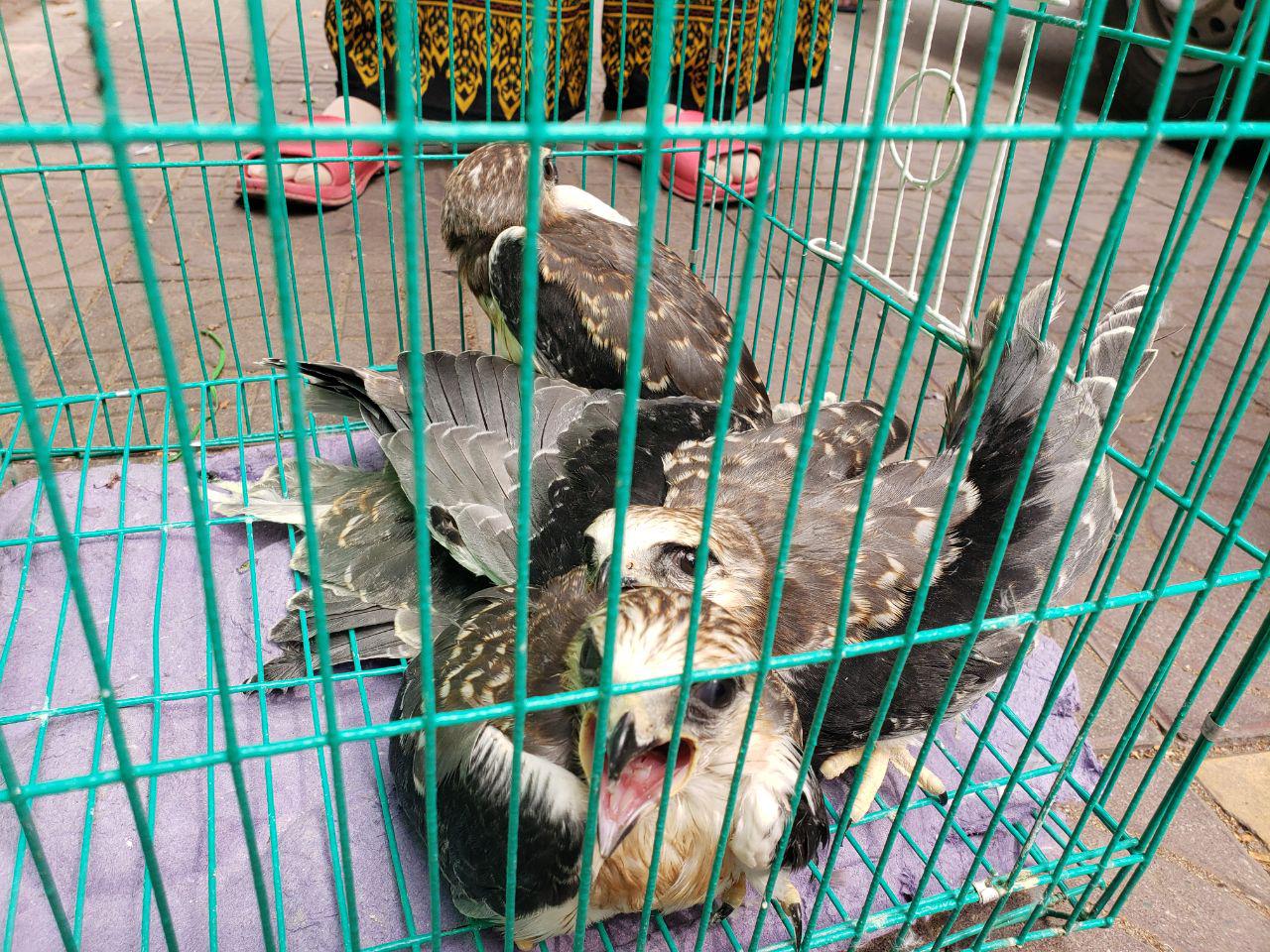
The demand – Who is buying them?
The chicks are transported to cities in Cambodia, including Battambong, Siem Reap and capital Phnom Penh. Here, they are sold to consumers as pets, pest controllers and makers of merit:
Black shouldered kites as “pets”
Buyers purchase the birds to keep as pets, likely with the intention of learning how to fly them as shown in many videos circulating online. However, as any “owner”will soon learn, a caged black shouldered kite is very noisy and shy. The species do not do well in small cages and require a specific diet. Altogether, they are not suitable pets.
Black shouldered kites as pest controllers
Sometimes farmers will buy them to release on their farms to help with rodent control. This is an expensive venture so it is assumed that these are large-scale farms. Perhaps these farms could use a few domestic cats to keep the rodents at bay.
Black shouldered kites for merit
Lastly, the intriguing reason of all: buying a bird to obtain merit. This Buddhist belief holds that one can accumulate a protective force by doing good deeds, acts or thoughts. This can be seen throughout Southeast Asia, and certainly within Phnom Penh, outside pagodas and at religious sites. Sellers carry cages containing dozens of birds, normally small common like sparrows, that can be brought and freed for “merit”. A large number of Cambodians have purchased animals for this purpose, as many as 90% of respondents in interviews on the trade.
Whatever the reason for purchase, this overexploitation is a major threat.
Overexploitation: the second-largest direct threat after habitat loss
Historically, such overexploitation has pushed species to extinction within decades.
The problem
Overexploitation, combined with habitat loss and other pressures affects the natural balance of the ecosystem, and in turn harms human communities .
Excessive trade in predatory species like black shouldered kites leads to diminished populations, which causes an imbalance in prey species, which would normally be controlled by kites and other predators. In large numbers, rodents can cause considerable damage to crops, impacting livelihoods.
A secondary effect of the trade is the discarding of animals which prove to be “too wild” to handle. Owners may then release the animals into unnatural habitats. These released animals could outcompete naturally occurring species, which impacts their populations. The introduction of invasive species can cause both environmental and economic harm. An animal released into the wrong habitat following the stress of being caught, sold and transported will most likely not live for very long, certainly not as long as it would have if left undisturbed in the nest.
Moreover, releasing species into areas where they would not naturally occur can have disastrous effects on the ecosystem.
I couldn’t get all the way through this blog without mentioning the current pandemic could I? That’s because that majority of the pandemics that have recently occurred, including ebola, MERs and COVID-19, have happened as a result of increased interactions between humans and wildlife. The more often humans come into contact with the wildlife, the more chance there are of zoonotic diseases creating another pandemic. As the world now knows, pandemics have devastating effects on livelihoods and the global economy. Pandemics also push more people into poverty, forcing them to turn to forests and wildlife within them to survive.
The solution– support communities and wildlife
WIldlife Alliance uses a multifaceted approach to combating the illegal wildlife trade.
Our mobile environmental education team, Kouprey Express has been working since 2005 to raise awareness of the importance of environmental protection and foster positive behavioural change. The mobile team travels to rural areas and works with schools and communities to improve knowledge about the environment and how people can protect it.
Many people in rural areas that rely on natural resources to make a living have limited access to education, skills training and economic opportunities. We provide alternative livelihoods through farming models, start up funds and Community Based Ecotourism. The increased availability of opportunities gives people the choice to protect the beautiful wildlife around them.
The Wildlife Rapid Rescue Team (WRRT) works to tackle the illegal wildlife trade 24 hours a day 7 days a week all across Cambodia. Using reports from informants, the Wildlife Crime Hotline number (012 500 094) and the Facebook page, the team can search, confiscate and arrest offenders. The team works with the Forestry Administration, an award-winning formula for combatting the wildlife trade in Asia. Once animals are confiscated, WRRT works closely with the teams at the Phnom Tamao Wildlife Rescue Centre, following established protocols to effectively manage them and ensure they have the best chance of potential release back into the wild.
Most animals can be released into the Cardamom Rainforest where 11 teams of rangers patrol the 1.3 million hectare landscape. The forest protection programme has been successful in maintaining contiguous forest cover and zero elephant poaching since 2006. Their 24/7 patrols support the recovery of many species targeted by poachers. Their on the ground presence and patrols ensure that rescued animals have somewhere safe to be released back to.
Overexploitation is one of the main threats to wildlife globally, the solution is not black and white. Wildlife Alliance aims to find a solution that suits forests, wildlife and communities. The future of the black shouldered kite and all of Cambodia’s beautiful wildlife depends on law enforcement, education and alternative livelihoods.
References
Borzée, A., McNeely, J., Magellan, K., Miller, J.R., Porter, L., Dutta, T., Kadinjappalli, K.P., Sharma, S., Shahabuddin, G., Aprilinayati, F. and Ryan, G.E., 2020. COVID-19 highlights the need for more effective wildlife trade legislation. Trends in ecology & evolution.
Dove, C.J., Snow, R.W., Rochford, M.R. and Mazzotti, F.J., 2011. Birds consumed by the invasive Burmese python (Python molurus bivittatus) in Everglades National Park, Florida, USA. The Wilson Journal of Ornithology, 123(1), pp.126-131.
Gilbert, M., Sokha, C., Joyner, P.H., Thomson, R.L. and Poole, C., 2012. Characterizing the trade of wild birds for merit release in Phnom Penh, Cambodia and associated risks to health and ecology. Biological Conservation, 153, pp.10-16.
Nghiem, L.T., Soliman, T., Yeo, D.C., Tan, H.T., Evans, T.A., Mumford, J.D., Keller, R.P., Baker, R.H., Corlett, R.T. and Carrasco, L.R., 2013. Economic and environmental impacts of harmful non-indigenous species in Southeast Asia. PLoS One, 8(8), p.e71255.
Ramli, R. and Fauzi, A., 2018. Nesting biology of Black-shouldered Kite (Elanus caeruleus) in oil palm landscape in Carey Island, Peninsular Malaysia. Saudi journal of biological sciences, 25(3), pp.513-519.
Rosser, A.M. and Mainka, S.A., 2002. Overexploitation and species extinctions. Conservation Biology, 16(3), pp.584-586.

